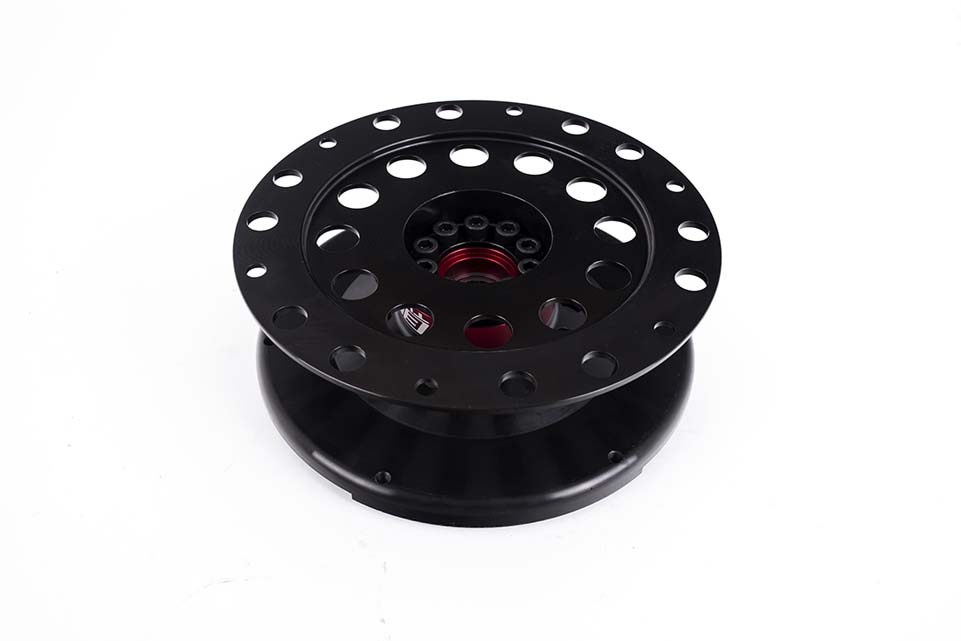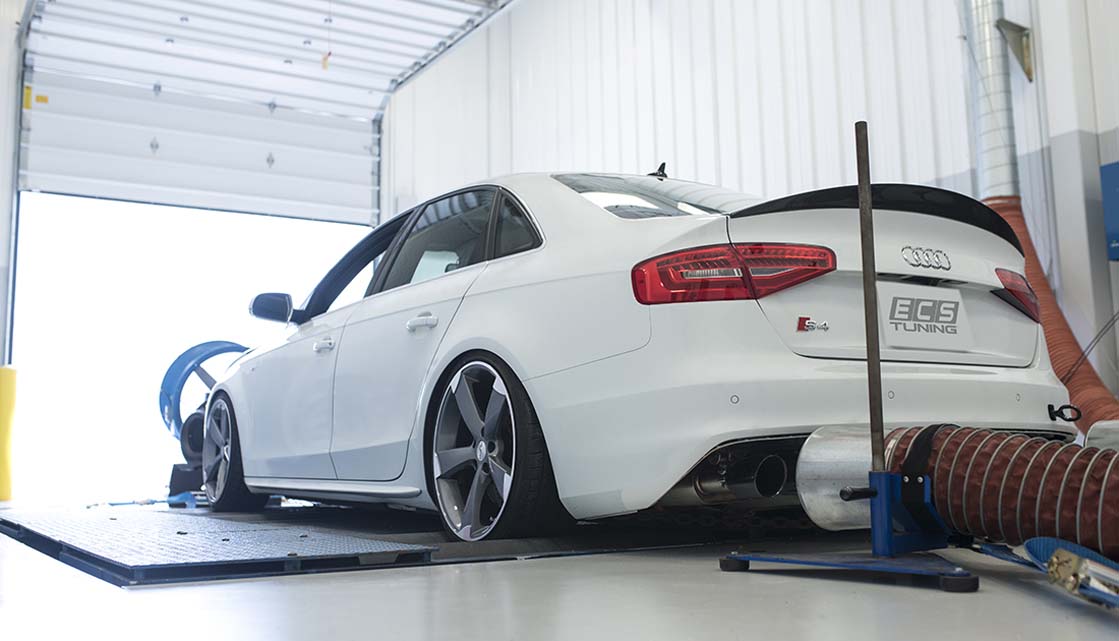Somewhat appropriately, I was having a conversation with another ECS employee today about the lightweight flywheel in one of my cars. The question had been asked of me why I chose a specific transmission, which came down to the flywheel I wanted to use, and what benefits, if any, exist with that decision. It occurred to me that not only was the question of why use a lightweight flywheel being asked, but we are also simultaneously heavily marketing our new B8 S4 Lightweight Flywheel and performance clutch kits, so I felt this was a quite appropriate time to break it down. Today, we’re back to business as usual with an explanation of what a lightweight flywheel actually does and why it might be a good idea for your 6MT B8 S4.

What exactly is a flywheel? I must admit, I did have to do some research to make sure I can explain it properly. I know, a look behind the curtain reveals that I, in fact, am not the walking encyclopedia of car history and mechanical knowledge that my writing may lead you to believe. That said, I am fairly confident the vast majority of manual transmission drivers are probably not exactly aware of what the flywheel does, though they may already know what some benefits of single mass or lightweight versions do for their car. So here is your (my) refresher on what a flywheel actually is:
A flywheel is a mechanical wheel that stores kinetic rotational energy. Flywheels resist changes to their rotational speed thanks to the moment of inertia, or rotational energy of the mass, which determines how much torque is needed for a specific angular acceleration on a rotational axis. In English, a flywheel is a big wheel that requires a specific amount of force to turn it and its weight defines how much energy it will release once that torque requirement has been met.

You have undoubtedly seen flywheels in other applications without recognizing them. Perhaps the most accessible flywheel is a potter’s wheel, which has remained unchanged for centuries. The large wheel mass requires you to put a lot of effort into getting the thing spinning, but once it is, it maintains that speed quite easily thanks to its heavy weight or moment of inertia. This should give you an idea of how one works in a manual transmission car. To equate, the flywheel is the potter’s wheel, the engine is your feet spinning the wheel.
But that isn’t all the flywheel does. Primarily, they are used with internal combustion engines to maintain smooth power delivery in an otherwise irregular power plant. The flywheel allows the ‘engine’ to spin continuously and smoothly rather than jarring with every combustion cycle. They also allow the engine to deliver energy in the form of power at rates beyond the ability of the engine. Not that they increase the power output, but that the additional rotating mass collects energy that can be released quickly, like letting off the throttle and back on immediately, without a delay from the engine trying to resupply that power and build back up that rotational inertia.
This all seems to point towards wanting a heavier flywheel for more power, so why is a lightweight flywheel so desirable? While it is true that the lighter weight means less inertia, but you have to remember, the flywheel is being driven, not the other way around. Since the flywheel is ultimately spun by the engine, the lower the mass, the less work is required to spin it. There is a point where your flywheel can be too light, but we won’t get into that. The point is, a lightweight flywheel decreases the mass being driven by your engine and subsequently allows for faster revving, quicker acceleration, and faster deceleration as it down revs equally quickly.

This is important from a performance perspective, as it allows for faster power delivery off the line and for quicker revs through the range. Effectively, you are de-burdening your engine slightly in a place where it otherwise has to move quite a lot of weight. In the case of our B8 S4 lightweight flywheel assembly, you are shedding about eleven pounds of weight for a significant increase in performance. Additionally, the change from a dual-mass to a single-mass flywheel makes for a very simple part that is also tremendously durable. Durable enough, in fact, to carry an SFI Foundation certification that verifies the flywheel can hold 10,500RPM over an extended period of time without failure. In this case, light doesn’t mean wimpy at all.
On top of the lightweight flywheel, these kits come in either Stage 1 or Stage 2 variants, depending on your application. Both are entirely streetable, but equally capable on the track, and offer performance benefits as well as stable power delivery up to 395ft/lbs thanks to the included South Bend Clutches. With this kit, your B8 S4 will experience faster revs and won’t slip under high horsepower applications whether you are just pulling stoplight to stoplight or pushing it around a track going for the overtake.
So, flywheels provide smooth and continuous power delivery thanks to their rotational mass, but the ‘Goldilocks zone’ of weight to performance is generally much lower than what you find in OEM flywheels. Why is that? Why wouldn’t Audi put something in that performs its best? To be honest, it comes down to comfort. Heavy, sprung, dual-mass flywheels are quiet, incredibly smooth, and preferred by the ‘non-enthusiast’ driver. However, if you are looking for the punchiest throttle and quickest down revs, the ECS Performance Lightweight Flywheel kit is your best choice for your desired responsiveness.
For more information on flywheels and their history, check out Engineering Explained, Enginemasters, and Science Garage. They all provide wonderfully entertaining information on flywheels and nearly every other component in your car with helpful diagrams, easy to understand language, and an engaging format. For your maintenance and upgrades needs, our S4 parts catalog is the most complete in the world. If you can’t find it here at ECS, it doesn’t exist.






